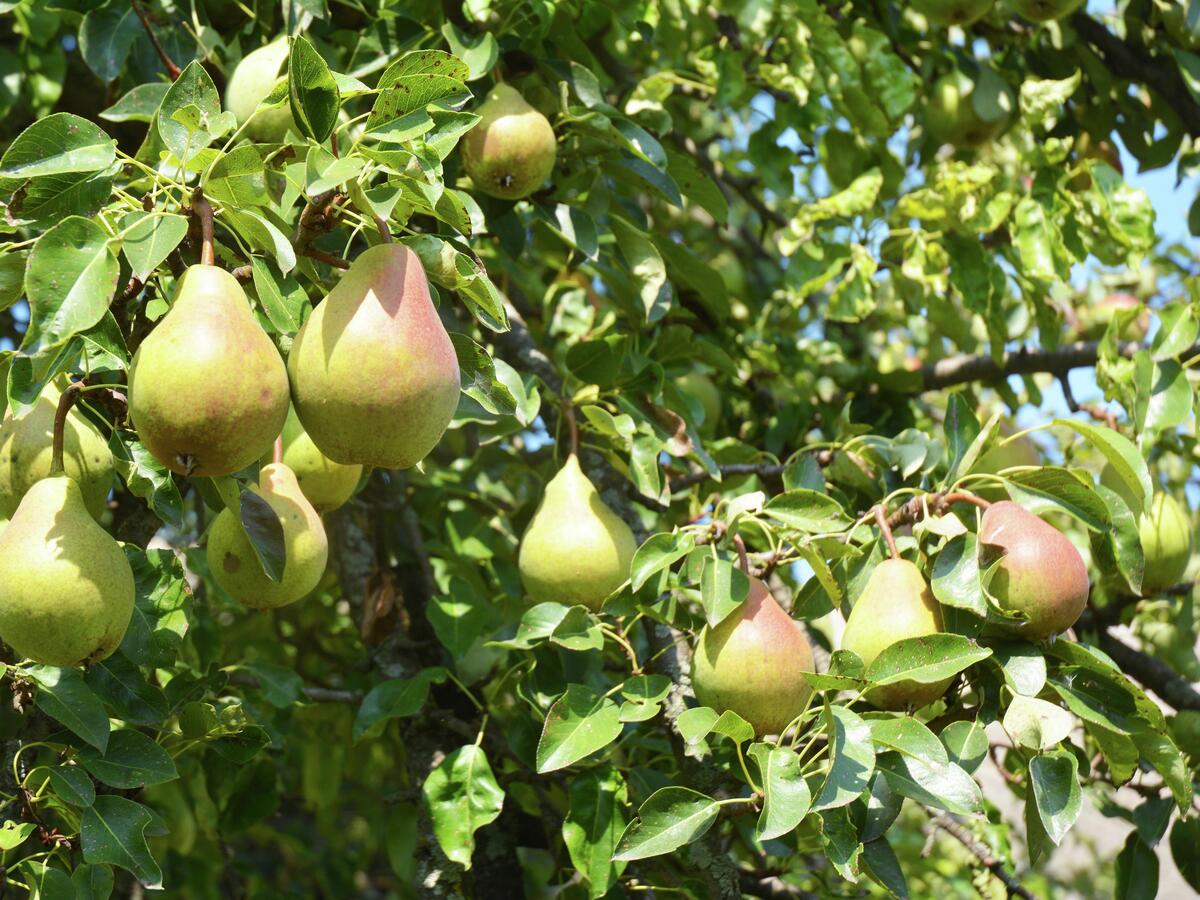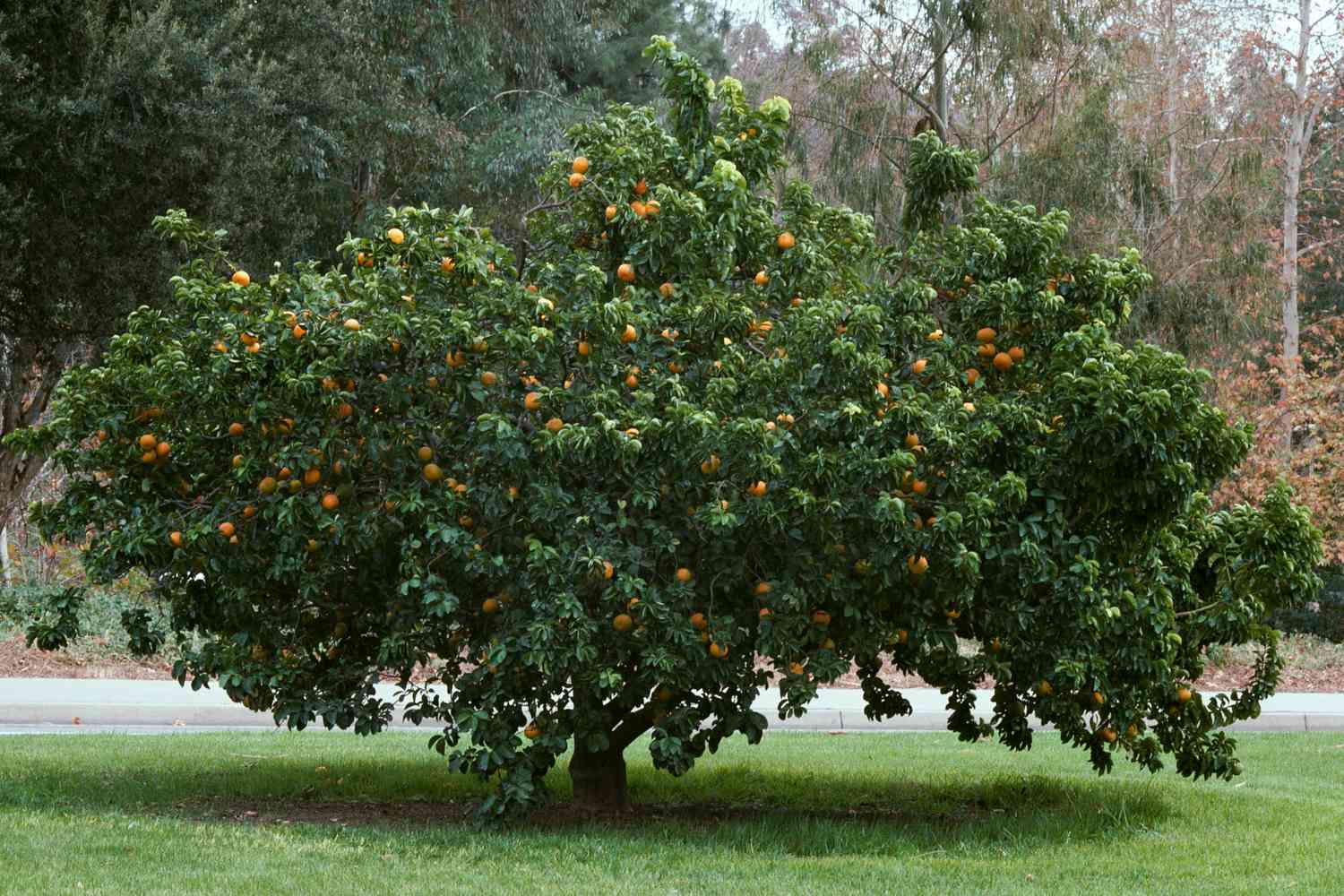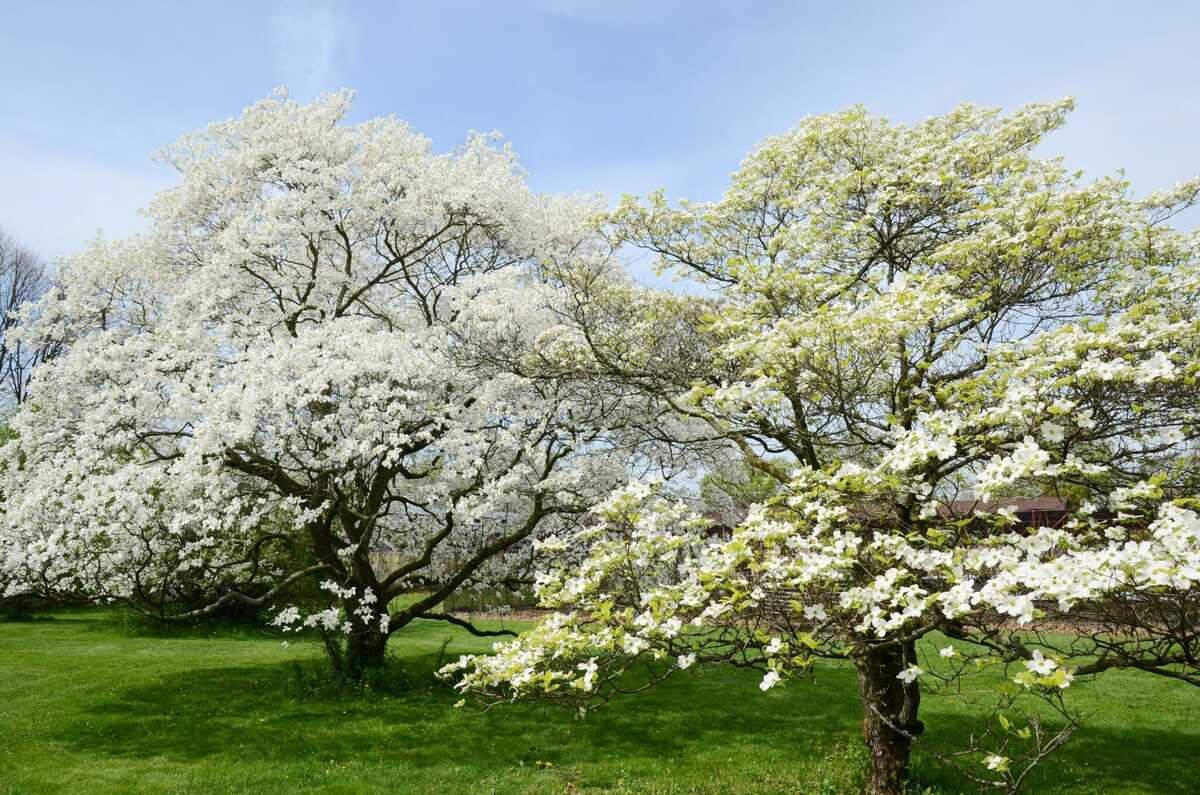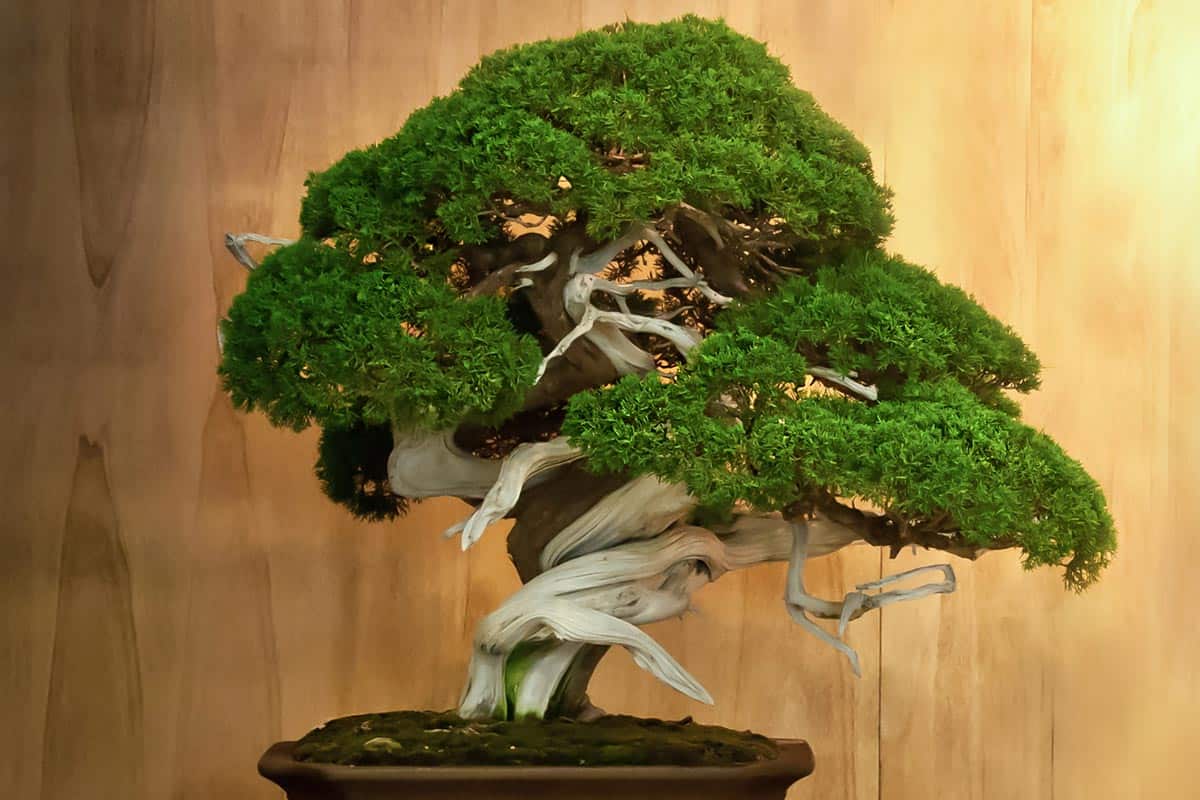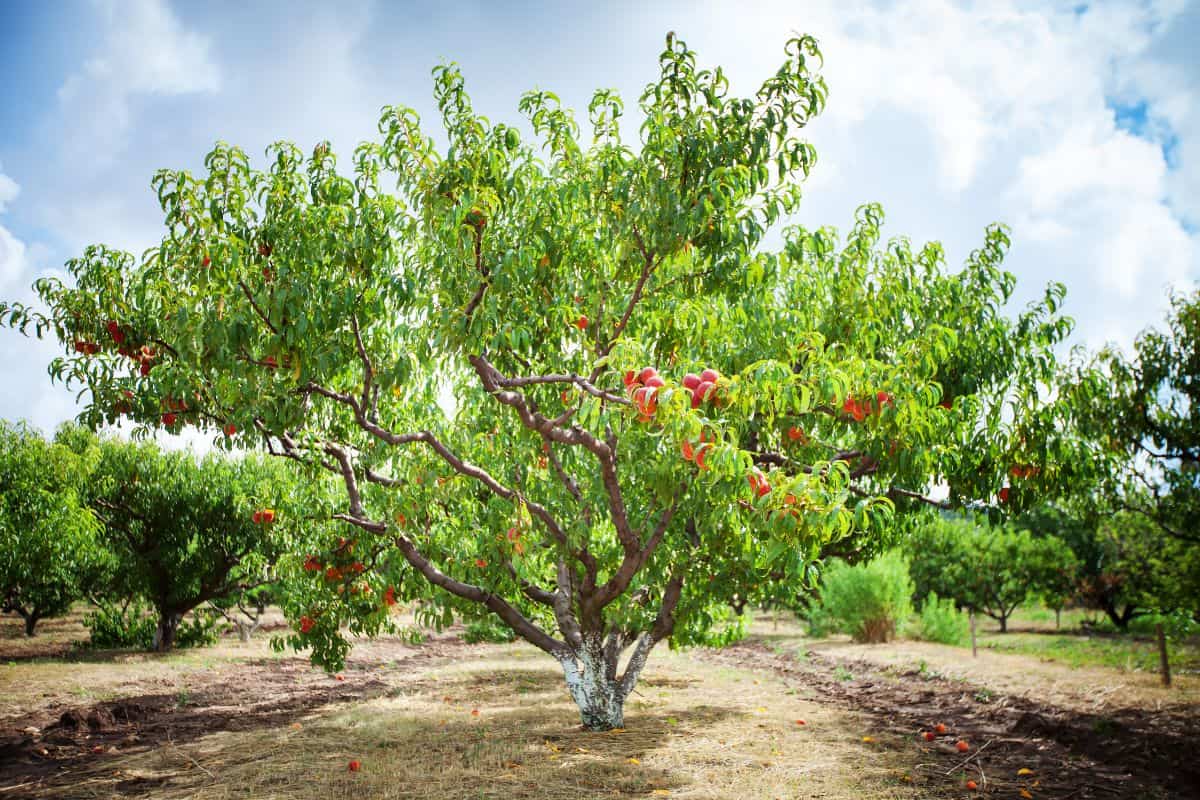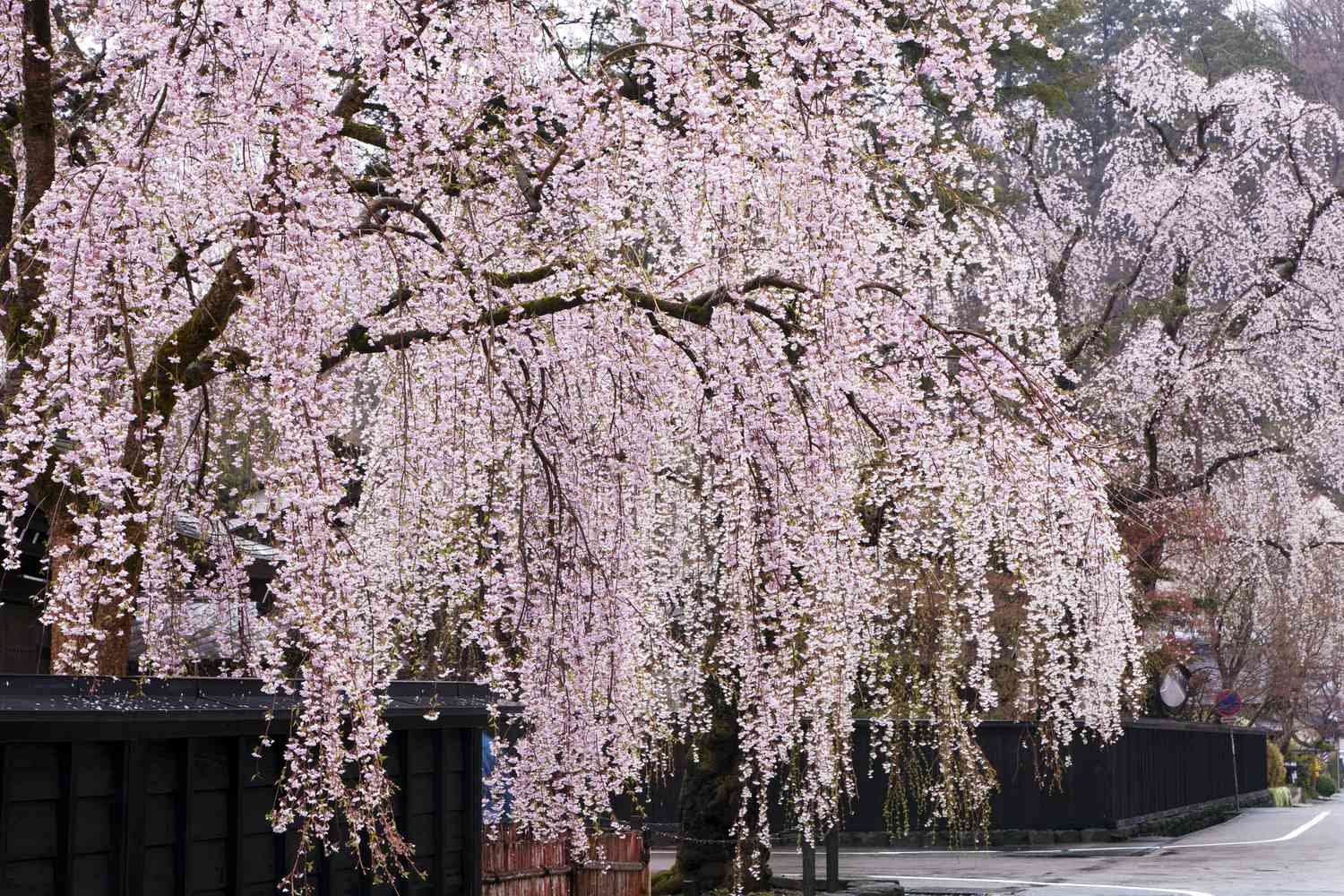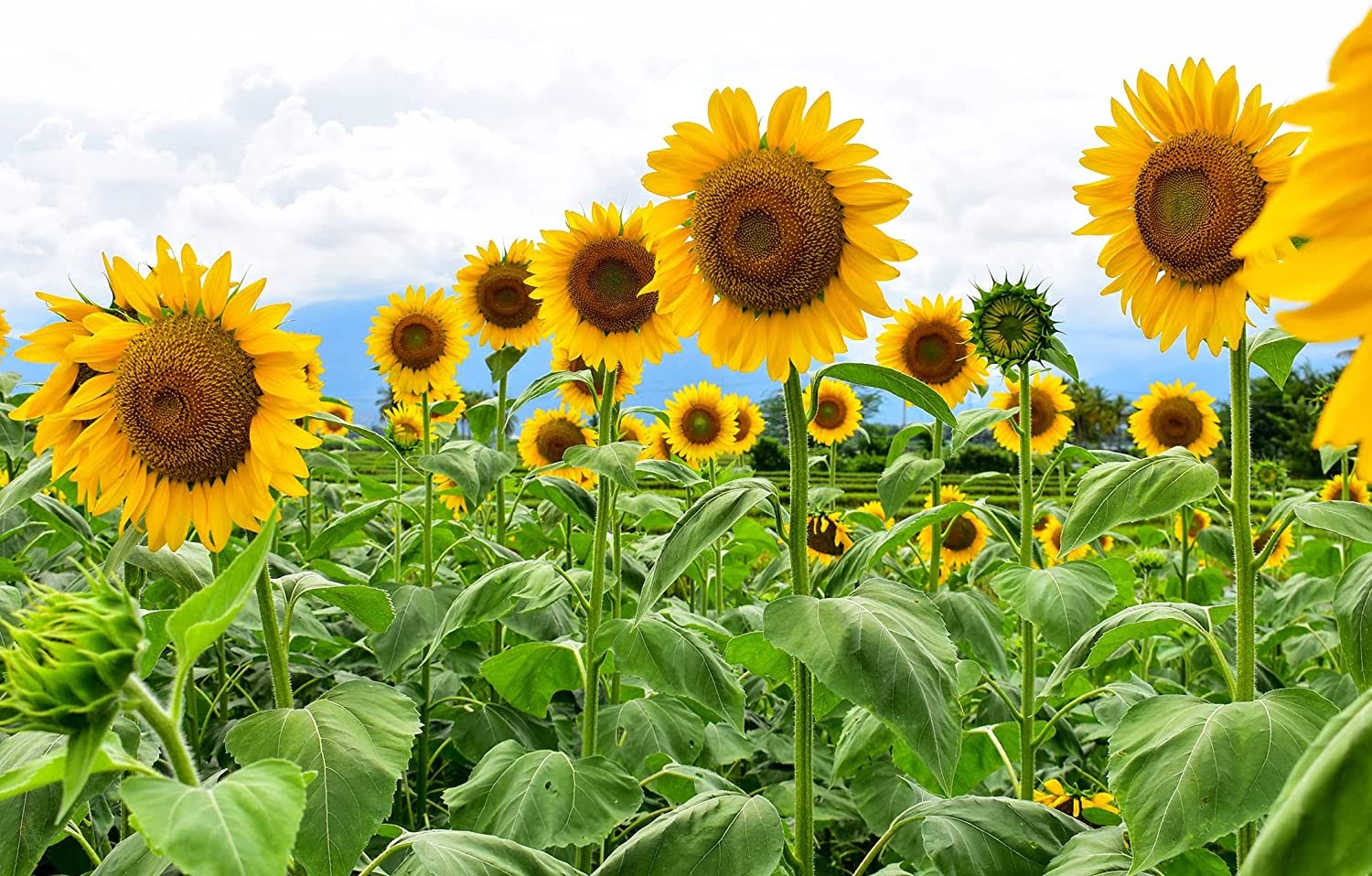Home>Garden Design>Planning Your Garden>How Big Do Hydrangea Trees Get
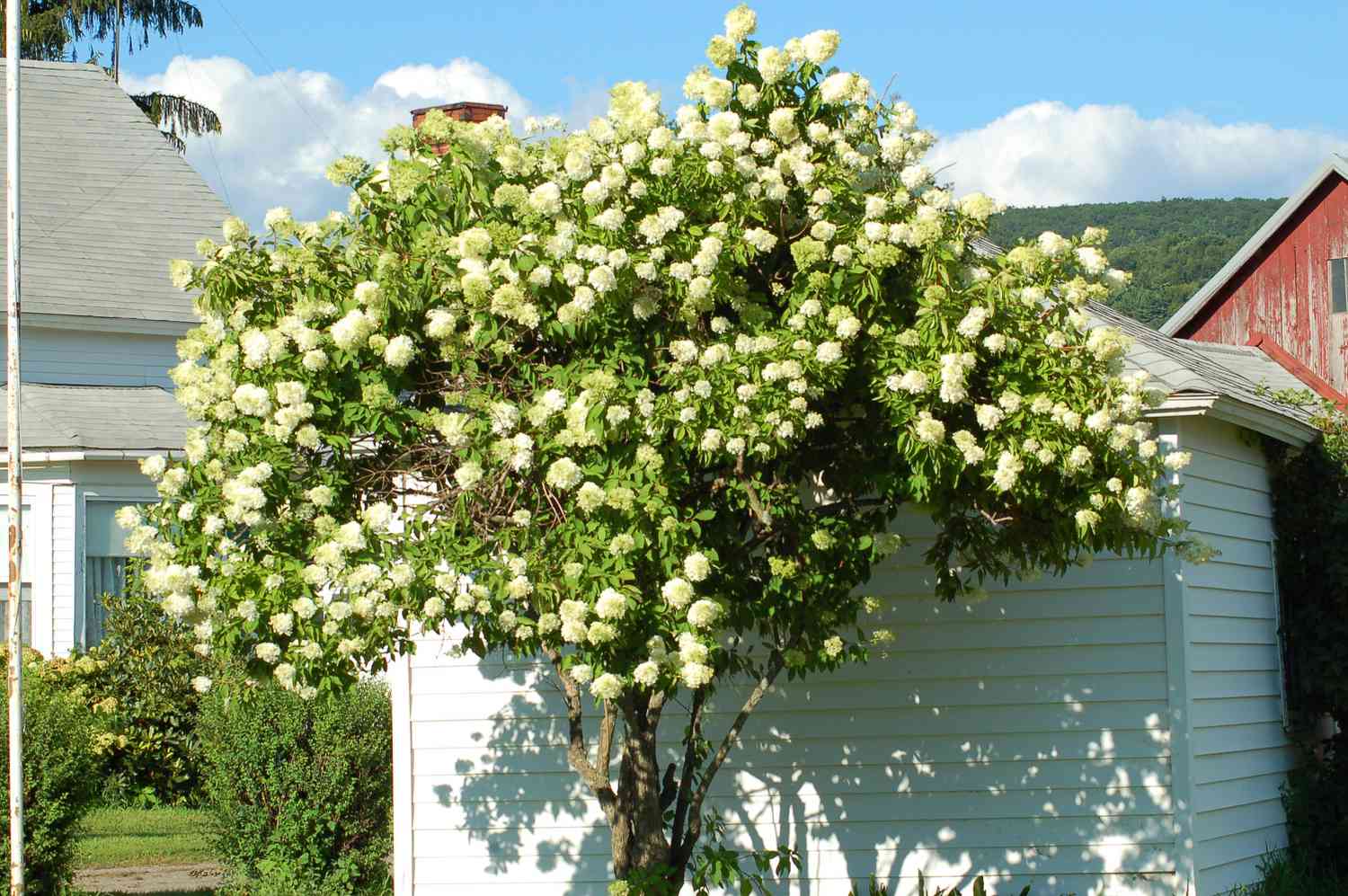

Planning Your Garden
How Big Do Hydrangea Trees Get
Modified: January 22, 2024
Discover how big hydrangea trees can grow and get expert tips for planning your garden. Create a beautiful and balanced landscape with the perfect size hydrangea trees.
(Many of the links in this article redirect to a specific reviewed product. Your purchase of these products through affiliate links helps to generate commission for Chicagolandgardening.com, at no extra cost. Learn more)
Table of Contents
- Introduction
- Factors Influencing the Size of Hydrangea Trees
- Common Varieties of Hydrangea Trees and Their Typical Sizes
- Tips for Managing the Size of Hydrangea Trees
- Pruning Techniques for Controlling the Size of Hydrangea Trees
- Potential Benefits and Drawbacks of Different Sizes of Hydrangea Trees
- Conclusion
Introduction
Welcome to the world of hydrangea trees, where beauty and elegance meet nature’s artistry. Planting hydrangea trees in your garden can add a touch of charm and grace to your landscape. These stunning flowering trees are known for their large, vibrant blooms that come in various shades of pink, blue, and white.
Hydrangea trees are not only a visual delight but also bring a sense of tranquility and serenity to any garden. They create a peaceful ambiance with their delicate petals and lush foliage, making them a popular choice among gardeners and landscapers.
But before diving into the experience of cultivating these magnificent trees, it’s important to understand how big hydrangea trees can get. The size of a hydrangea tree can vary depending on several factors, including the variety, growing conditions, and pruning techniques.
In this article, we will explore the factors that influence the size of hydrangea trees, discuss a few common varieties, and provide tips on managing their size to fit your garden. Whether you have a small urban garden or a sprawling estate, understanding the growth potential of hydrangea trees will help you plan your garden effectively.
So, if you’re ready to dive into the world of hydrangea trees, let’s explore the factors that influence their size and discover how to create a picturesque garden filled with these magnificent flowering trees.
Factors Influencing the Size of Hydrangea Trees
Several factors play a role in determining the size of hydrangea trees. Understanding these factors will help you anticipate and manage the growth of your hydrangea trees in your garden.
1. Variety: Different varieties of hydrangea trees have varying growth habits and mature sizes. For example, the popular PeeGee hydrangea (Hydrangea paniculata ‘Grandiflora’) can reach impressive heights of up to 25 feet, while the Oakleaf hydrangea (Hydrangea quercifolia) typically grows to a more modest height of 6-8 feet.
2. Genetics: The genetic makeup of the hydrangea tree influences how tall and wide it will grow. Some varieties have naturally compact growth habits, while others tend to be more vigorous in their growth.
3. Growing Conditions: The environment in which a hydrangea tree grows can impact its size. Factors such as climate, sunlight exposure, soil quality, and moisture levels all contribute to the overall growth and development of the tree. Hydrangeas thrive in well-drained soil with a slightly acidic pH level.
4. Pruning Techniques: Pruning plays a crucial role in controlling the size and shape of hydrangea trees. Regular pruning helps maintain the desired height and prevents the tree from becoming overgrown. Generally, pruning is done in late winter or early spring, before new growth begins.
5. Age: As hydrangea trees mature, they tend to increase in size. It’s important to consider the potential growth of the tree over time when planning your garden.
6. Water and Nutrients: Providing adequate water and nutrients to the hydrangea tree will support its healthy growth. Regular watering during dry periods and fertilizing with a balanced, slow-release fertilizer can promote vigorous growth.
By taking these factors into consideration and implementing appropriate care practices, you can influence the size of your hydrangea trees and shape them to fit your garden design.
Common Varieties of Hydrangea Trees and Their Typical Sizes
Hydrangea trees come in a variety of cultivars, each with its own unique characteristics and typical size. Below are some popular hydrangea tree varieties and the sizes they typically reach:
1. PeeGee Hydrangea (Hydrangea paniculata ‘Grandiflora’): This is one of the most common hydrangea tree varieties. It can grow into a small tree or large shrub, reaching heights of 10-25 feet with a spread of 10-20 feet. The PeeGee hydrangea produces large, cone-shaped flower clusters that start out white and gradually turn pink as they age.
2. Smooth Hydrangea (Hydrangea arborescens): The smooth hydrangea typically grows as a shrub but can be trained into a tree-like form. It reaches a height of 3-5 feet, with a similar spread. The flowers are round and white, creating a stunning display in the garden.
3. Oakleaf Hydrangea (Hydrangea quercifolia): Named for their leaves’ resemblance to oak leaves, these hydrangea trees grow to a height of 6-8 feet, with a similar spread. They produce beautiful cone-shaped flower clusters that start out white and fade to shades of pink and brown as they age. The oakleaf hydrangea’s foliage turns a vibrant red or purple in the fall, adding to its appeal.
4. Bigleaf Hydrangea (Hydrangea macrophylla): This hydrangea variety is known for its large, showy mophead and lacecap flowers. Bigleaf hydrangeas can grow as shrubs or tree-like forms, depending on the specific cultivar. They typically reach heights of 3-6 feet, with a similar spread. The flowers come in various colors, including blue, pink, and white.
5. Climbing Hydrangea (Hydrangea anomala petiolaris): While not a traditional tree, this vine-like hydrangea can reach impressive heights of up to 30 feet. It attaches itself to surfaces with aerial roots and produces clusters of white flowers. The climbing hydrangea is a great choice for adding vertical interest to walls, fences, and trees in your garden.
It’s important to note that these are general estimations of typical sizes, and actual size can vary depending on the growing conditions and maintenance practices. Additionally, newer cultivars and hybrids are continually being introduced, offering even more options to choose from when planning your garden.
Tips for Managing the Size of Hydrangea Trees
Managing the size of hydrangea trees is essential to ensure they fit harmoniously in your garden space. Here are some tips to help you control and manage the size of your hydrangea trees:
1. Prune Regularly: Pruning is an effective way to control the size and shape of hydrangea trees. Regular pruning helps remove dead or diseased branches and encourages new growth. It’s best to prune hydrangeas in late winter or early spring before new growth begins. Be sure to prune carefully to maintain the natural shape and form of the tree.
2. Understand the Pruning Needs of Different Varieties: Different hydrangea varieties have varying pruning requirements. Some varieties bloom on old wood, while others bloom on new wood. Research the specific pruning needs of your hydrangea variety to ensure you prune at the right time and in the correct manner to avoid compromising future blooms.
3. Train the Tree Shape: When hydrangea trees are young, you can shape them to your desired form. Prune selectively to encourage the growth of strong central branches and remove any competing or crossing branches. This will help establish a well-balanced and structured tree shape as it matures.
4. Control Watering and Fertilizing: Provide the right amount of water and nutrients to your hydrangea tree. Over-fertilizing and over-watering can lead to excessive growth. Follow the recommended watering schedule and fertilize sparingly with a balanced, slow-release fertilizer to promote healthy growth without stimulating excessive size.
5. Consider Transplanting: If your hydrangea tree has outgrown its space, you may need to consider transplanting it to a more suitable location. However, transplanting hydrangea trees can be challenging, and success depends on proper care before and after the move. Consider consulting a professional or researching proper transplanting techniques if you decide to go this route.
6. Choose Dwarf or Compact Varieties: If you have limited space or prefer smaller-sized hydrangea trees, consider selecting dwarf or compact varieties. These types of hydrangea trees are bred to stay smaller in size without compromising their stunning blooms. Look for specific cultivars labeled as “dwarf” or “compact” when making your plant selections.
By implementing these management tips, you can maintain the size and shape of your hydrangea trees, ensuring they remain a beautiful addition to your garden without overpowering the space.
Pruning Techniques for Controlling the Size of Hydrangea Trees
Pruning is a crucial practice for controlling the size and shaping the growth of hydrangea trees. By using the right pruning techniques, you can keep your trees at a manageable size while promoting healthy growth and abundant blooming. Here are some pruning techniques to help you control the size of your hydrangea trees:
1. Identify the Pruning Time: Different hydrangea varieties bloom on old wood or new wood, so it’s important to know when to prune. Prune hydrangeas that bloom on old wood, such as oakleaf hydrangeas, immediately after flowering. For hydrangeas that bloom on new wood, like peegee hydrangeas, prune in late winter or early spring before new growth starts.
2. Remove Dead or Diseased Branches: Begin by inspecting your hydrangea tree and removing any dead, dying, or diseased branches. This promotes overall tree health and reduces the risk of infections or infestations. Make clean cuts just above a leaf node or healthy bud to encourage new growth.
3. Thin Out Overcrowded Branches: If your hydrangea tree is becoming too dense or crowded, thin out some of the branches to increase air circulation and sunlight penetration. Remove old or weak branches from the base of the tree to allow for stronger, healthier growth. Use sharp and clean pruning shears to make precise cuts.
4. Prune for Desired Shape and Size: When pruning, keep in mind the desired shape and size you want for your hydrangea tree. If you want a more compact and tidy look, selectively prune the branch tips to the desired length. To maintain a specific height or size, prune back the branches accordingly. Remember to maintain the natural shape of the tree for the best aesthetic appeal.
5. Avoid Cutting Flower Buds: If your hydrangea tree blooms on old wood, be careful not to remove flower buds while pruning. Avoid cutting branches that have visibly formed buds or have started to bloom. Instead, focus on pruning the dead or unproductive wood while preserving the buds that will produce the next season’s flowers.
6. Regularly Monitor and Adjust: Hydrangeas are dynamic plants that can continue to grow rapidly under ideal conditions. Regularly monitor the growth of your hydrangea trees and adjust your pruning practices as needed. By staying proactive and staying on top of pruning, you can effectively control the size of your hydrangea trees over time.
Remember, the key to successful pruning is not to remove more than one-third of the total growth each year. Proper pruning will help maintain the size of your hydrangea trees while promoting healthy growth and ensuring abundant blooms year after year.
Potential Benefits and Drawbacks of Different Sizes of Hydrangea Trees
When it comes to selecting the size of your hydrangea trees, there are both benefits and drawbacks to consider. Understanding the potential advantages and disadvantages of different sizes will help you make an informed decision that suits your garden and personal preferences. Here are some factors to consider:
Benefits of Larger Hydrangea Trees:
- Dramatic Visual Impact: Larger hydrangea trees can create a stunning focal point in your garden, commanding attention with their impressive size and abundant blooms.
- More Blooms: Larger trees have the potential to produce more blooms, resulting in a more vibrant and captivating display of colors in your garden.
- Privacy and Shade: Taller hydrangea trees can provide privacy and shade in your outdoor space, offering a cozy and secluded environment.
- Cutting Material: Larger hydrangea trees can provide an abundant supply of cut flowers for floral arrangements, allowing you to enjoy their beauty indoors as well.
Drawbacks of Larger Hydrangea Trees:
- Space Limitations: Larger hydrangea trees require ample space to grow and may be unsuitable for smaller or more confined gardens.
- Maintenance Challenges: Pruning and maintaining larger hydrangea trees can be more demanding and time-consuming compared to smaller varieties.
- Increased Water and Nutrient Needs: Taller trees usually have larger root systems and require more water and nutrients to support their growth and health.
Benefits of Smaller Hydrangea Trees:
- Fit for Limited Spaces: Smaller hydrangea trees are well-suited for smaller gardens or spaces, allowing you to enjoy the beauty and elegance of hydrangeas without overwhelming the area.
- Easy Maintenance: Smaller trees are generally easier to prune and maintain, requiring less time and effort to keep them looking their best.
- Flexible Placement: Smaller hydrangea trees offer more flexibility in terms of placement, allowing you to incorporate them into various areas of your garden or landscape design.
Drawbacks of Smaller Hydrangea Trees:
- Limited Impact: Smaller trees may not create as dramatic of an effect or serve as a strong focal point in larger gardens.
- Reduced Bloom Quantity: Smaller trees may produce fewer blooms compared to their larger counterparts, limiting the overall visual impact of their flowering display.
Ultimately, the choice of the size of your hydrangea trees will depend on your available space, desired aesthetic, and personal preferences. Whether you opt for a grand and towering display or a more compact and cozy arrangement, hydrangea trees are sure to bring beauty and joy to your garden.
Conclusion
Hydrangea trees bring a touch of elegance and beauty to any garden, with their stunning blooms and lush foliage. Understanding the factors that influence their size, the common varieties available, and how to manage their growth is essential for planning and maintaining a harmonious garden space.
By knowing the typical sizes of different hydrangea tree varieties, you can select the ones that best suit your garden’s dimensions and desired aesthetic. Whether you prefer grand and towering trees or compact and manageable sizes, there are hydrangea tree varieties to fit your needs.
Proper pruning techniques allow you to control the height and shape of your hydrangea trees, ensuring they stay within the desired boundaries without compromising their health or flowering potential. Regular pruning, done at the appropriate times and using the correct methods, plays a vital role in maintaining the size and structure of these majestic trees.
While larger hydrangea trees can create a dramatic visual impact and provide shade and privacy, they may require more maintenance and space. On the other hand, smaller trees are suitable for limited spaces, require less upkeep, and offer more flexibility in placement.
Ultimately, the choice of the size of your hydrangea trees should be based on your garden space, personal preferences, and the overall aesthetic you wish to achieve. By considering the potential benefits and drawbacks, you can make an informed decision that will enhance the beauty of your garden.
So, whether you opt for towering hydrangea trees that make a grand statement or prefer the charm of more compact varieties, incorporating these magnificent flowering trees into your garden will surely bring joy and enchantment for years to come.
